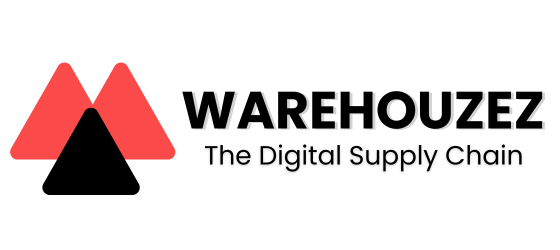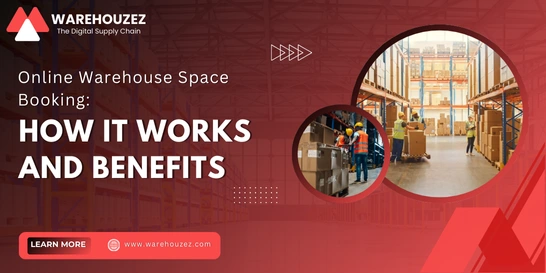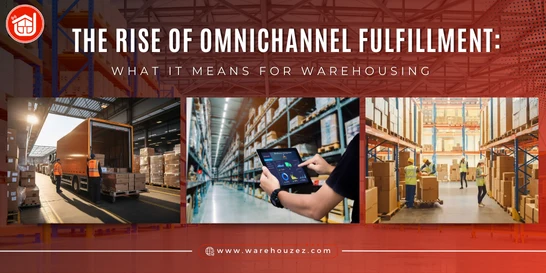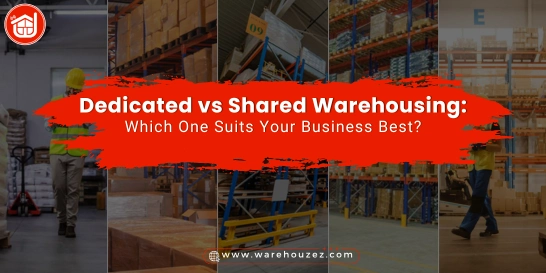Top 10 Things to Consider When Leasing a Warehouse Space
Top 10 Things to Consider When Leasing a Warehouse Space
Leasing a warehouse space is certainly a crucial decision for businesses across industries, shaping their operational efficiency and overall success. However, there are several things to take into consideration when renting a facility, including location, lease terms, infrastructure, and service offerings. The significance of securing the right warehouse cannot be overstated, as it directly impacts logistics, storage capabilities, customer satisfaction, and ultimately, the bottom line.
In this particular blog post, we will discuss the factors that businesses should keep at the forefront when leasing a warehousing setting. We will equip you with the insights you need to make informed decisions and optimize your supply chain management. So, let's get started!
Understanding What a Warehouse Is and the Importance of Leasing Warehouse Space for Businesses
At its core, a warehouse is more than a mere storage facility; it fundamentally functions as the backbone of streamlined supply chain management for businesses. It is a strategically designed space that is responsible for the storage, organisation, and distribution of goods.
In today's dynamic business landscape, choosing the right warehouse service provider and renting the right storage facility are imperative for businesses. When considering leasing options, factors such as lease terms, location, size, accessibility, infrastructure, and services must be carefully evaluated. Collaborating with a reputable 3PL warehousing company adds an additional layer of advantage by offering strategically located storage facilities equipped with state-of-the-art technologies. This not only streamlines storage, transportation, and order fulfilment operations but also helps businesses increase customer satisfaction and gain a competitive edge.
Top Considerations When Leasing Warehouse Space
Let's take a look at the most important things to consider when leasing or renting a warehouse space:
1. Location
To begin with, the geographical location of a warehousing setting plays a paramount role in its overall functionality. Proximity to suppliers and customers is important, reducing transportation costs and facilitating timely deliveries. Additionally, considering accessibility for distribution and transportation networks is crucial. Easy access to major highways, ports, and other transportation hubs streamlines the movement of goods, contributing to a more efficient supply chain. So, take into consideration the location of the warehouse and make sure it is strategically located in a prime location, ensuring easy accessibility.
2. Size, Capacity, and Layout
Determining the appropriate size and capacity of the storage space is foundational to effective operations. Businesses must carefully assess their space requirements, taking into account their current needs and future growth. Optimizing the warehouse layout is equally important, as a well-designed space enhances operational efficiency and productivity. Strategically placed storage areas, proper picking routes, and streamlined workflows contribute to a seamless and cost-effective warehousing environment.
3. Lease Terms and Costs
Understanding lease terms is essential for businesses navigating warehousing options. Factors such as lease duration, flexibility, and renewal options should be carefully examined to align with the company's operational timeline and growth projections. Additionally, businesses should be vigilant about hidden costs and fees, including maintenance charges, utilities, and any potential penalties for early termination. A transparent understanding of lease terms and costs is crucial for budgetary planning and long-term sustainability. Additionally, businesses should choose a warehousing company that provides warehouses with flexible leasing options and both long-term and short-term storage solutions.
4. Infrastructure, Features, and Facilities
The infrastructure and features of a warehousing setting significantly impact its functionality. Assessing the facility's design, such as the height of ceilings, floor load capacity, and the availability of dock doors, ensures compatibility with the specific needs of the business. Warehouses equipped with modern technologies, such as automation, an advanced inventory management system, WMS software, and RFID tracking, contribute to increased operational efficiency and adaptability to industry trends.
5. Safety and Security
Prioritizing safety and security measures is paramount in warehousing operations. Surveillance systems, including CCTV cameras, provide real-time monitoring and enhance overall security. Implementing robust fire prevention measures, such as sprinkler systems and fire-resistant materials, mitigates potential risks. Warehouses adhering to stringent safety standards not only protect valuable inventory but also safeguard the well-being of personnel, creating a secure working environment.
6. Technology Integration
Embracing automation technologies is crucial for efficient supply chain management. Inventory Management Systems (IMS) and Warehouse Management Systems (WMS) play a paramount role in optimizing inventory levels, order statuses, and overall operational efficiency. When leasing a warehouse space, businesses should evaluate the integration of such technologies, ensuring that the facility aligns with the company's technological requirements and growth plans.
7. Warehouse Services and Customer Support
Assessing the comprehensive range of services offered by a 3PL warehousing company is essential. Businesses should consider the service offerings, such as inventory management, storage, picking, packing, value-adding, shipping, and order fulfillment, among others. They should evaluate storage options, including bulk, dedicated, shared, and temperature-controlled spaces, ensuring compatibility with the nature of their goods. Furthermore, superior customer support mechanisms, including responsiveness to queries, issue resolution, and transparency in communication, contribute to a seamless and collaborative partnership with the warehouse service provider.
8. Compliance and Regulations
Businesses must ensure that the selected storage facility adheres to industry-specific regulations and standards. This includes compliance with safety protocols, environmental regulations, and any other legal requirements relevant to the nature of the stored goods. A warehouse that upholds rigorous compliance measures safeguards the business against potential legal challenges.
9. Future Expansion Options
Anticipating future growth is a crucial consideration when leasing a warehousing space. Companies should evaluate the scalability of the facility, considering both the physical space and the infrastructure. Flexible lease terms, expansion options, and the ability to accommodate increased storage needs over time are critical factors. Choosing a facility that aligns with the business's growth trajectory certainly ensures a sustainable and adaptable long-term solution.
10. Reviews and Remarks of the Service Provider
Taking insights from reviews and remarks about the warehouse service provider is an invaluable step in the decision-making process. Businesses should seek feedback from current as well as previous clients, considering factors such as service quality, reliability, responsiveness, and overall satisfaction with the services provided. Examining testimonials and reviews offers a real-world perspective on the service provider's track record and helps in making an informed choice.
Concluding Remarks
To offer concluding remarks, navigating the process of leasing warehouse space involves careful planning, deep research, and the evaluation of several factors. All the factors discussed above play a pivotal role in the success of a business's supply chain management. From the strategic significance of location and the optimization of size and layout to understanding lease terms and embracing advanced technologies, the considerations outlined in this guide provide a comprehensive roadmap for businesses embarking on this journey. The mix of these elements contributes not only to cost-effective and efficient operations but also positions companies for scalability and adaptability in a dynamic market. By carefully weighing these top considerations, businesses can make informed decisions, ensuring that the chosen warehouse aligns seamlessly with their operational needs, long-term objectives and ultimately fosters success in a competitive landscape.



